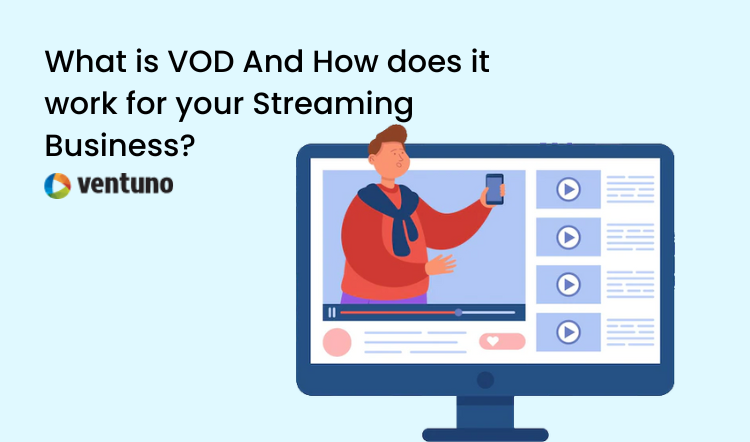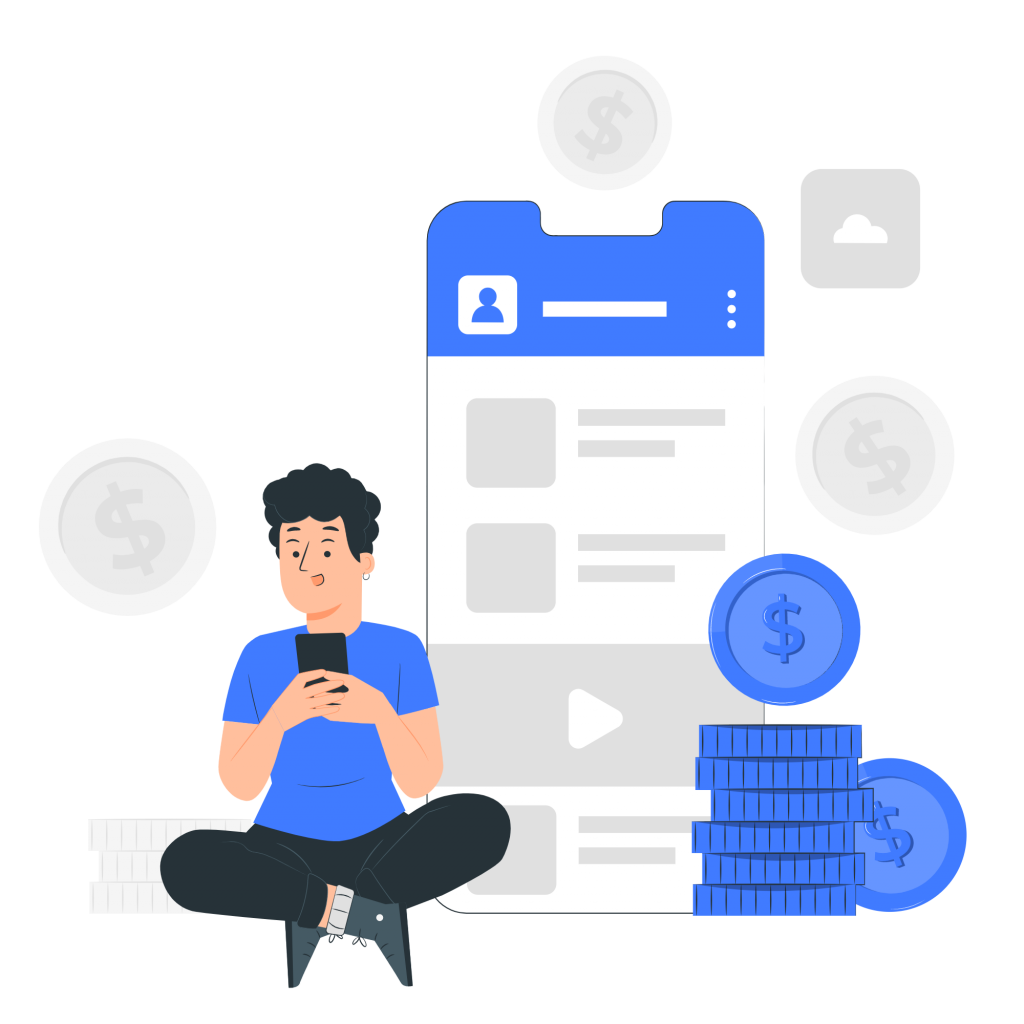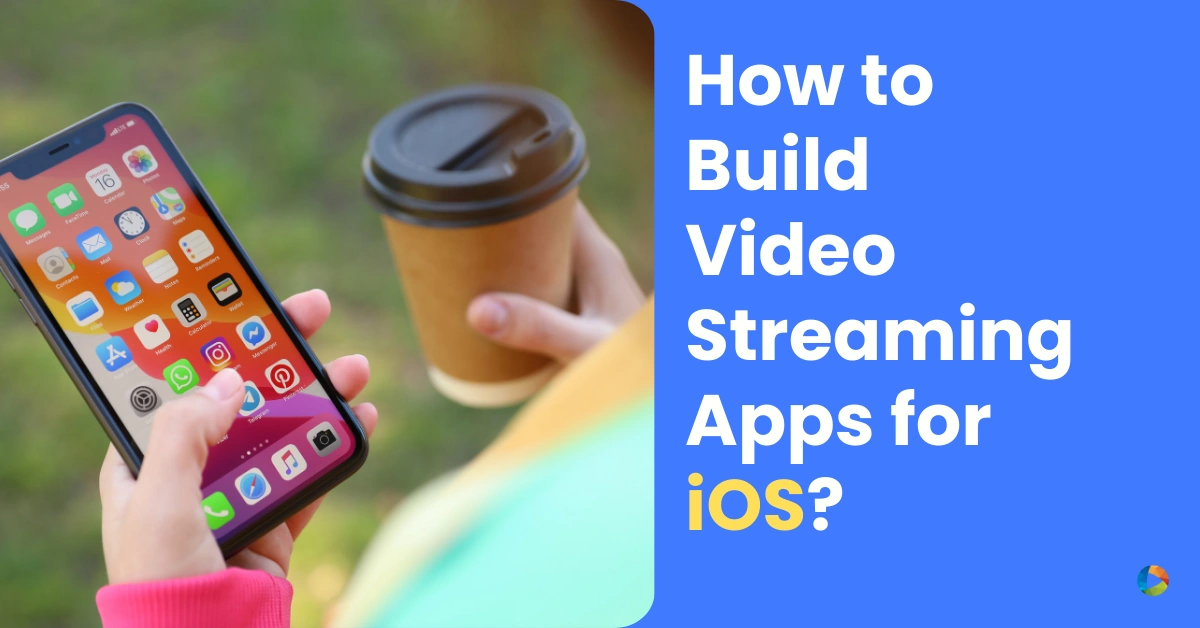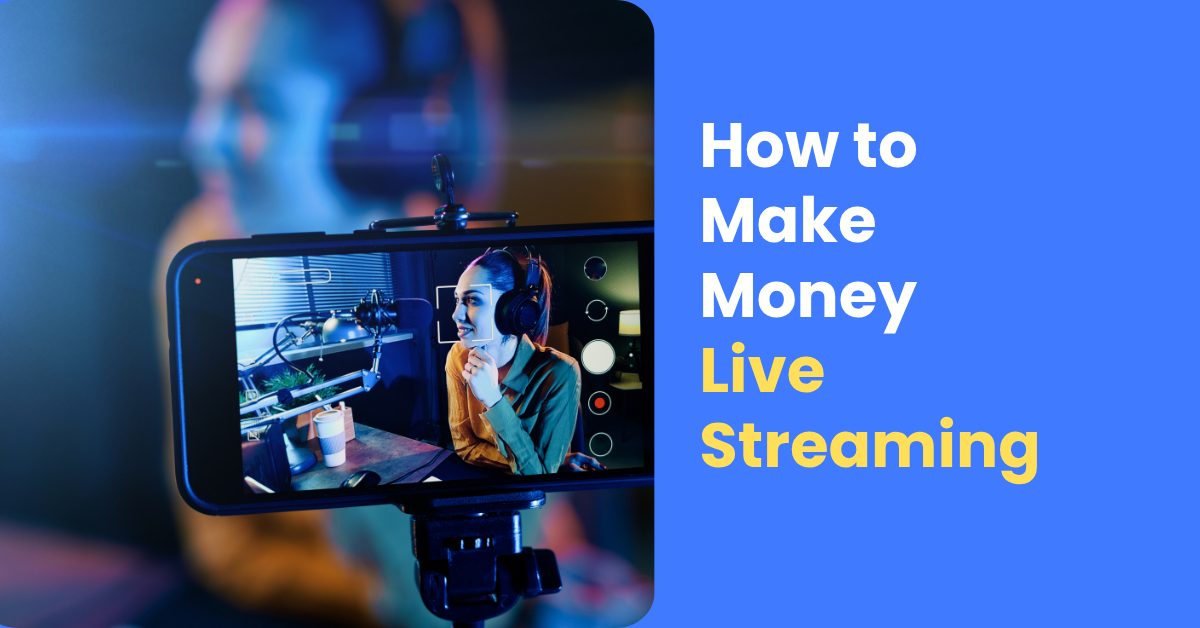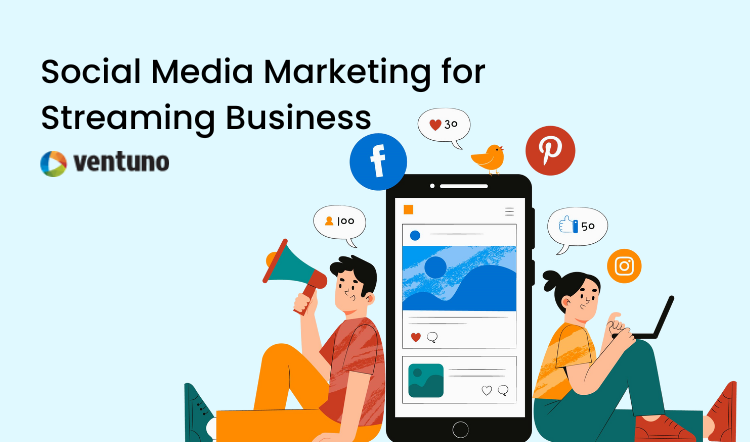What is VOD And How does it work for your Streaming Business?
Last Updated on March 28, 2023 by Anjana Devi
VOD or Video on Demand is not just the present, but the future of the streaming industry.
Ask yourself a question, how are you consuming content these days? Definitely not on your traditional cable network or DTH anymore.
Gone are the days when we used to glue ourselves in front of the TV and wait for hours & days for our favorite show & movie to be streamed.
It’s obvious that in this fast-paced world that carries the “RIGHT NOW” attitude, VOD & OTT comes as a blessing.
Some examples of VOD Businesses.
Well, there are hundreds of VOD businesses out there in the market right now, and the most famous one’s currently are apps like – Netflix, Amazon Prime Video, Hulu, HBO Max.
These are not just apps anymore, they have become a very crucial part of our daily lives and how we prioritize entertainment. This in itself is enough to explain the importance of VOD.
What are the benefits & advantages of VOD streaming?
Flexible usage
VOD gives audiences the flexibility to watch exactly what they want, whenever they want to.
In fact, 77% of Americans were happy with the flexibility which they get with VOD as opposed to 34% who were happy with Cable Subscriptions.
VOD gives the power to your users to consume their choice of content, at their own convenience.
Let’s say on a Saturday evening you want to enjoy a light-hearted movie, you can simply log in to your VOD service, browse through different categories and turn on the movie you want to watch – SIMPLE!
Watch on any device & at any time.
Leverage the power of consuming the content of your choice, at any given moment and on any device.
This is one of the nicest VOD advantages. If you are travelling, alone at a restaurant or simply waiting in a long queue, just open any VOD app and start watching your favorite movies/TV shows. VOD businesses are omnipresent and offer extreme convenience.
Cost effective.
Video on Demand is cost-effective for both users & VOD businesses.
Talking about the users, getting access to on-demand movies, TV shows & Live streaming comes at a fraction of the cost of what they would typically pay to a traditional Cable TV network.
It’s far cheaper to launch your OTT service than to launch a cable/ satellite TV channel.
With OTT, you don’t need to pay to uplink and downlinking charges, carriage fees, content delivery fees, distribution fees, and more. You save hundreds of thousands of dollars every Month!
PS – It is more cost-effective if you build & launch their own VOD service via a SaaS platform like Ventuno.
Complete control of watching (viewers can pause, download and watch it later)
As consumers, we all like having the ability and power to control in our hands.
And this is exactly what consumers get while consuming content on VOD services.
VOD businesses give us the power to pause the movies/shows we are watching, download them and watch at any time, without internet!
To understand how you can launch your own VOD OTT platform, we would recommend you to read this article- How to Start a Video Subscription Service
Monetization Models for VOD Streaming:
SVOD
SVOD or Subscription Video on Demand means offering a flexible subscription plan for on-demand & live streaming content to your users.
Here, users can subscribe by paying a small amount every month or year (can also be once in 3 or 6 months in some cases) to gain unlimited access to the content on your platform. For instance, Netflix monetizes its video content using the SVOD model.
With SVOD, you get uninterrupted ad-free service and access to a vast library of videos.
AVOD
Think of YouTube. Users watch content for free and creators earn revenue from advertisements. It is a powerful model and works well for creators who generate a lot of views.
As a video content creator, AVOD is a great model if your streaming platform gets a lot of traffic and if people are not ready to pay for viewing them. In general, the AVOD model suits News, Lifestyle and Entertainment categories and is completely ad-supported.
TVOD
While SVOD is like all-you-can-eat-buffet, Transactional-based Video on Demand is like ordering à la carte. Viewers get to pick and choose what they want to watch and only pay for that particular content.
Movies, series and sporting events choose this model to get higher revenue per view. TVOD model does not have the same retention as the SVOD service as, unlike SVOD model, viewers pay only when they want to watch a particular content. There are many streaming platforms which follow a similar business model, such as YouTube Movies and Google Play.
Launch your VOD business effortlessly with Ventuno:
A suitable and reliable platform that ticks all the boxes is very crucial for your VOD business journey.
The platform should be robust enough to address the below questions:
• Is it an all-in-one platform?
• Can you launch all possible apps?
• How long does it take to launch all the apps?
• Is the platform user friendly?
• Are their servers capable of managing millions of users?
• And most importantly, how good is their support?
Ventuno is a complete OTT platform which gives a suite of all the latest features which are required to successfully launch, manage and grow your on-demand streaming services.
Moreover it addresses all the crucial pain-points which content owners usually have and allows them to run their OTT streaming service the way they want to.
Conclusion:
The OTT streaming industry is growing rapidly. Global OTT revenue is expected to reach $159 Billion by 2024, more than doubling in a mere 6 years. COVID 19 has further accelerated growth.
Content creators can leverage these numbers to their advantage and connect with their audiences in a more personalised way.
An excellent VOD strategy supported by a reliable partner like Ventuno is an ideal way to keep growing in the OTT market.
Ready to start your VOD journey?
Looking to launch your streaming app?

